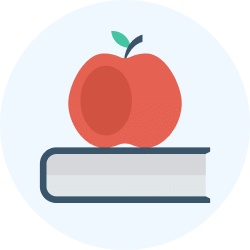Grade 2 Exam > Grade 2 Notes > Language Arts for Grade 2 > Chapter Notes: Compare and Contrast
Compare and Contrast Chapter Notes | Language Arts for Grade 2 PDF Download
Introduction
Comparing and contrasting is a fun way to learn about things by looking at how they are the same and how they are different. When we compare, we find things that are alike. When we contrast, we find things that are not the same. This helps us understand stories, animals, people, or objects better by noticing what makes them special or similar. In this chapter, we will learn how to compare and contrast information in passages we read.
Compare and contrast in informational passages
- Understand what comparing means
- Comparing is finding ways two or more things are the same.
- It helps us see what things share, like features, actions, or qualities.
- Example: A dog and a cat both have fur and are pets.
- Understand what contrasting means
- Contrasting is finding ways two or more things are different.
- It shows what makes each thing special or unique.
- Example: A dog barks, but a cat meows.
- Find similarities in informational passages
- Read the passage carefully to find facts about two or more things.
- Look for words like "both," "same," or "alike" that show similarities.
- Think about what the things have in common, like size, color, or what they do.
- Example: In a passage about apples and oranges, both are fruits and grow on trees.
- Find differences in informational passages
- Read the passage to find facts that make things different.
- Look for words like "but," "different," or "unlike" that show differences.
- Think about how the things are not the same, like shape, taste, or use.
- Example: In a passage about apples and oranges, apples are red or green, but oranges are orange.
- Use clues in the text to compare and contrast
- Pay attention to words that signal similarities, like "both" or "also."
- Notice words that signal differences, like "however" or "only."
- Read sentences that describe each thing to find what is the same or different.
- Example: A passage might say, "Both lions and tigers are big cats, but lions live in groups, and tigers live alone."
- Organize information to compare and contrast
- Make a list of what is the same about the things in the passage.
- Make a list of what is different about the things in the passage.
- Use a chart or table to write down similarities and differences side by side.
- Example: For a passage about summer and winter, list that both are seasons (same) and summer is hot while winter is cold (different).
- Why comparing and contrasting is important
- Helps us understand things better by seeing what they share and what makes them unique.
- Makes reading more fun because we learn new facts.
- Helps us explain what we learned to others clearly.
- Example: When we compare and contrast a car and a bike, we learn both have wheels, but a car has an engine, and a bike needs pedaling.
The document Compare and Contrast Chapter Notes | Language Arts for Grade 2 is a part of the Grade 2 Course Language Arts for Grade 2.
All you need of Grade 2 at this link: Grade 2
|
138 videos|157 docs|51 tests
|
FAQs on Compare and Contrast Chapter Notes - Language Arts for Grade 2
| 1. What does it mean to compare and contrast in informational passages? |  |
Ans. Comparing and contrasting involves looking at the similarities and differences between two or more subjects. In informational passages, this can help readers understand how items, ideas, or concepts are alike and how they differ, which can enhance comprehension and retention.
| 2. Why is it important to teach grade 2 students how to compare and contrast? |  |
Ans. Teaching grade 2 students to compare and contrast helps them develop critical thinking skills. It encourages them to analyze information, organize their thoughts, and understand relationships between different topics, which are essential skills for reading and writing.
| 3. What are some examples of subjects that can be compared and contrasted? |  |
Ans. Examples of subjects that can be compared and contrasted include animals (e.g., cats vs. dogs), seasons (e.g., winter vs. summer), or types of food (e.g., fruits vs. vegetables). These examples help students relate to the concept in ways they find engaging and understandable.
| 4. How can graphic organizers aid in comparing and contrasting? |  |
Ans. Graphic organizers, such as Venn diagrams or comparison charts, visually represent the similarities and differences between subjects. They help students organize their thoughts clearly, making it easier to see how items relate to one another.
| 5. What strategies can teachers use to help students practice comparing and contrasting? |  |
Ans. Teachers can use various strategies, such as group discussions, paired activities, and guided reading sessions. They can also provide specific prompts or questions to direct students' attention to key similarities and differences, enhancing their understanding and engagement with the material.
Related Searches















